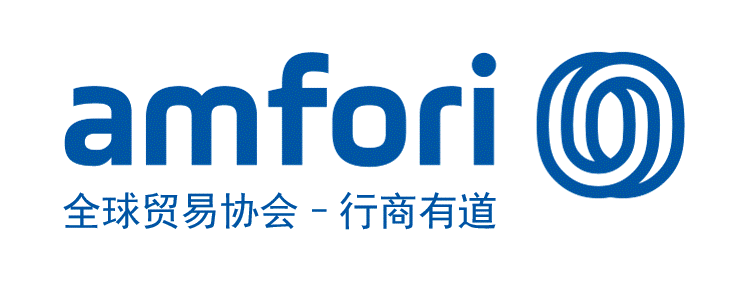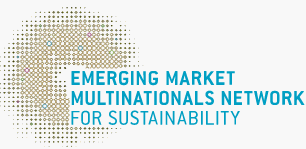Opportunities & challenges: bankings under carbon neutrality(II)
2021-11-25GoldenBeeGoldenBee0

Yin Hong, vice president of Modern Finance Research Institute of ICBC and Deputy Secretary General of Green Finance Committee of China Society for Finance and Banking, is committed to studying green finance, including stress testing of environmental risks on credit risks of commercial banks, ESG rating and green index etc. Yin also severs as the Chinese leader of the pilot program of environmental disclosure of financial institutions in China and UK, as well as the co-chairman of the first work panel of the Belt and Road "Green Investment Principle" (GIP).
Q|China Sustainability Tribune
A|Yin Hong
Strengthening low-carbon management to achieve banks’ sustainable operation
Q: How should banks and other financial institutions use the power of the market to resolve the above risks and at the same time help achieve the goal of carbon peak and carbon neutrality?
A: According to the Task Force on Climate-Related Financial Disclosure (TCFD), carbon emissions of financial institutions can be divided into three categories: first, carbon emissions directly generated by institutions owned or controlled by financial institutions (scope 1), mainly including carbon emissions generated by fuels consumed by self-owned vehicles, heating and cooling equipment, etc.; second, indirect carbon emissions generated by institutions owned or controlled by financial institutions (scope 2), mainly including purchased electricity and heat, etc.; third, carbon emissions generated by related supply chains of institutions owned or controlled by financial institutions (scope 3), such as emissions generated by employees taking public transport for business, and by purchased office supplies, etc. In addition, carbon emissions from enterprises or projects invested or financed by financial institutions are also included.
Therefore, financial institutions have two roles in carbon neutrality. One is that financial institutions set an example to achieve their own carbon neutrality goal; the other is that financial institutions invest and finance in carbon neutrality, that is, they support enterprises and projects in carbon emission reduction and carbon neutrality through investment and financing to help the society achieve the goal of carbon neutrality.
Firstly, financial institutions themselves achieve their own carbon neutrality goal. Not too many banks have already announced their goal of carbon neutrality, and most of their carbon neutrality goals are for themselves. For example, HSBC has proposed to achieve carbon neutrality for itself and its supply chain by 2030; Bank of America has announced that it has achieved carbon neutrality by 2019 and is waiting for the third-party’s verification; Haitong International has announced that it is to achieve carbon neutrality by 2025.
Secondly, financial institutions may invest and finance in carbon neutrality. HSBC announced that it will invest and finance in carbon neutrality by 2050; CitiBank and Standard Chartered incorporated carbon neutrality into their strategic objectives, established a sustainable organizational structure, and formulated low-carbon policies and processes; Barclays Bank, Deutsche Bank, Standard Chartered, Sumitomo Mitsui Trust Bank stop providing loans for new coal-fired power projects, and gradually withdrew from existing projects of that kind; UniCredit SpA said it would stop providing loans for coal-fired power financing by 2023.
Q: What do you mean by saying that the environmental disclosure of financial institutions is a good starting point to achieve the 30·60 Goal?
A: Yes, I deeply realized that in the pilot program of China and UK environmental disclosure led by ICBC. On the basis of TCFD (Climate-related Financial Disclosure Framework), the task force of the pilot program proposed the Target Framework for Environmental Disclosure of Financial Institutions in China and the UK (China), combined with the actual situation in China, and formulated the industry standard "Guidelines for Environmental Disclosure of Financial Institutions" (to be approved and released).
According to the framework, financial institutions need to qualitatively disclose strategies, governance, policies, risk management and processes related to the environment and climate, and quantitatively disclose business progress and risk analysis related to the environment and climate. Any financial institution that has not established the above green financial system, business processes, data statistics and business systems need to improve in accordance with the disclosure framework. Only by establishing and continuously improving the green financial system including the carbon neutrality goal, can financial institutions effectively play a role in helping to achieve the "30·60 Goal". Therefore, environmental disclosure is a good starting point.
At present, China's financial institutions' environmental disclosure has policies, basis as well as demands. Policies mean that China strengthens the support policies regulatory requirements for green finance, and introduces various positive and pragmatic measures to promote the implementation. For example, the State Council issued the Guidance on Accelerating the Establishment and Improvement of Green, Low-carbon and Circular Economic System, and relevant departments issued a series of documents, such as climate investment and financing, carbon market trading, compulsory environmental disclosure reform plan; the work meeting of the People's Bank of China in 2021 further clarified the requirements for financial institutions on supervision and information disclosure; and the Green Financial Development Regulations of Shenzhen Special Economic Zone was officially put into effect.
The basis refers to that the task force of the China & UK environmental information pilot program has, under the leadership of the Green Finance Committee of the People's Bank of China and the City of London, obtained experience and achievements that can be promoted; and it has compiled the Guidelines for Environmental Disclosure of Financial Institutions based on China’s actual situation and TCFD International standard. The pilot institutions have begun to release environmental disclosure reports. For example, ICBC has compiled the Green Finance Special Report for two consecutive years.
Demands indicate that the regulatory requirements for information disclosure of financial institutions will become increasingly strict. Investors pay increasingly higher attention to banks' ESG, carbon peak and other related information. Thus, financial institutions need to disclose to market stakeholders their understanding of carbon neutrality, relevant strategies, policies, measures and results.
Q: What are the problems or gaps in our financial system compared with the carbon neutrality goal?
A: The existing problems and possible solutions: first, green finance needs to be incorporated in relevant laws. Although Shenzhen has issued China's first Green Financial Development Regulations of Shenzhen Special Economic Zone, the description of green finance still needs to be enriched in the Commercial Bank Law, Civil Code and other regulations; second, the green finance standard highlights environmental impact indicators yet low-carbon factors need to be added in as well. Third, the quality of environmental disclosure needs to be improved; Fourth, the national carbon market needs to be established and play a greater role; Fifth, financial institutions need to establish a low-carbon strategic system since their low-carbon financial products still lack innovation, and climate risk management ability needs to be further improved.
Q: What suggestions do you have for speeding up the implementation of the carbon peak and carbon neutrality financial system?
A: My suggestions are as follows: first, low carbon factors should be included in the existing green finance standards. Based on the current classification of green credit, green bond and green industry, carbon emission indicators should be added; since clean coal and other parts that do not meet the requirements of carbon neutrality have been deleted in the 2020 Green Bond Catalog (draft for comments), the carbon screening criteria need to be reflected in the future standards including the Green Credit Standard and the Green Industry Catalog.
Second, speeding up the development of environment and climate disclosure system. First of all, it is suggested that the regulatory authorities formulate a guiding framework and supervision system to guide and encourage financial institutions to establish a green financial system, innovate green financial products and services, and strengthen the basic capacity of environmental disclosure; besides, the environmental information disclosure should be included in the regulatory incentive and restrictive mechanism as well as the evaluation system.
Third, strengthening environmental and climate risk management. Financial institutions should be encouraged to establish environmental and climate risk analysis and management to facilitate environmental risk stress testing. Financial institutions with a stronger foundation can try first, while those weak in foundation should catch up to be qualified to carry out stress test as soon as possible.
Fourth, creating a big data platform for carbon emissions and environmental information of enterprises. The government, enterprises, financial institutions and industry associations can work together with new technologies and methods to build a data platform for carbon emission and environmental information, supporting the intellectualization of the environmental risk of investment and financing.
This article is translated from China Sustainability Tribune.
Best Practices
- The 100-year brand — Air Liquide also has a sense of juvenile
- Beijing Public Transportation Corporation: Developing green transportation to build a harmonious and livable capital
- CGN: Building a modern factory in barren deserts and developing a new win-win cooperation model along “Belt and Road”
Upcoming Event

All the materials on the site “Source: XXX (not from this site)” have been reprinted from other media. They do not imply the agreement by the site.
All the materials with “Source: CSR-China Website” are the copyright of CSR-China Website. None of them may be used in any form or by any means without permission from CSR-China Website.
GoldenBee Official WeChat
Copyright © Csr-china.net All Right Reserved.
京ICP备19010813号










